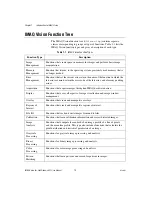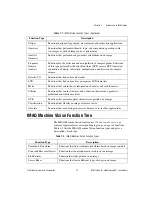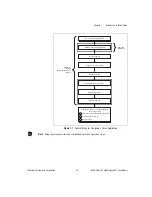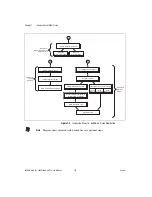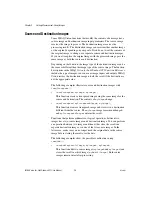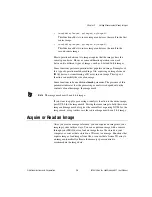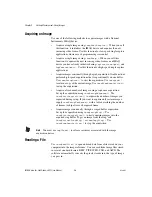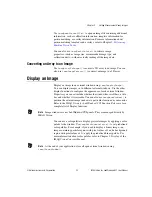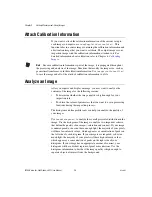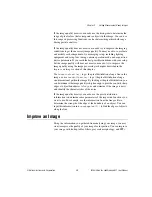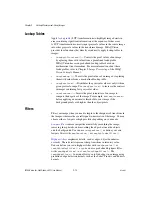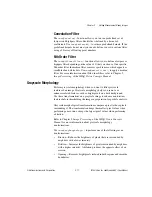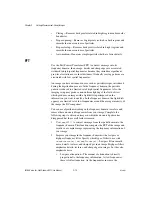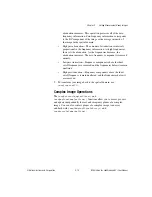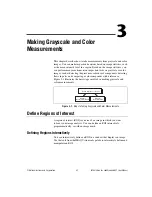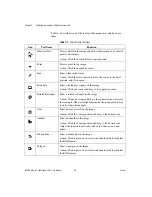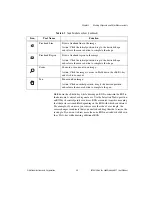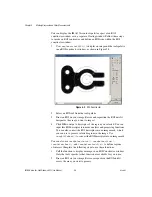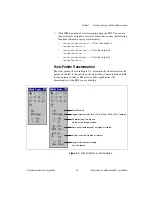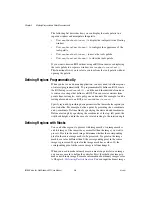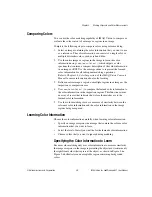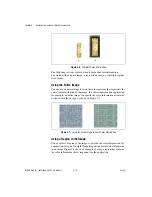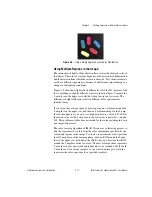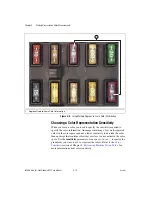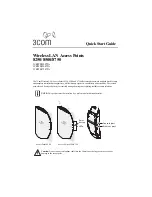
Chapter 2
Getting Measurement-Ready Images
IMAQ Vision for LabWindows/CVI User Manual
2-10
ni.com
Lookup Tables
Apply
lookup table
(LUT) transformations to highlight image details in
areas containing significant information at the expense of other areas.
A LUT transformation converts input grayscale values in the source image
into other grayscale values in the transformed image. IMAQ Vision
provides four functions that directly or indirectly apply lookup tables to
images.
•
imaqMathTransform()
—Converts the pixel values of an image
by eplacing them with values from a predefined lookup table.
IMAQ Vision has seven predefined lookup tables based on
mathematical transformations. For more information about these
lookup tables, refer to Chapter 5,
Image Processing
, of the
IMAQ
Vision Concepts Manual
.
•
imaqLookup()
—Converts the pixel values of an image by replacing
them with values from a user-defined lookup table.
•
imaqEqualize()
—Distributes the grayscale values evenly within a
given grayscale range. Use
imaqEqualize()
to increase the contrast
in images containing few grayscale values.
•
imaqInverse()
—Inverts the pixel intensities of an image to
compute the negative of the image. For example, use
imaqInverse()
before applying an automatic threshold to your image if the
background pixels are brighter than the object pixels.
Filters
Filter your image when you need to improve the sharpness of transitions in
the image or increase the overall signal-to-noise ratio of the image. You can
choose either a lowpass or highpass filter depending on your needs.
Lowpass filters
remove insignificant details by smoothing the image,
removing sharp details, and smoothing the edges between the objects
and the background. You can use
imaqLowPass()
or define your own
lowpass filter with
imaqConvolve()
or
imaqNthOrderFilter()
.
Highpass filters
emphasize details, such as edges, object boundaries,
or cracks. These details represent sharp transitions in intensity value.
You can define your own highpass filter with
imaqConvolve()
or
imaqNthOrderFilter()
, or you can use a predefined highpass filter
with
imaqEdgeFilter()
or
imaqCannyEdgeFilter()
. The
imaqEdgeFilter()
function allows you to find edges in an image using
predefined edge detection kernels, such as the Sobel, Prewitt, and Roberts
kernels.

